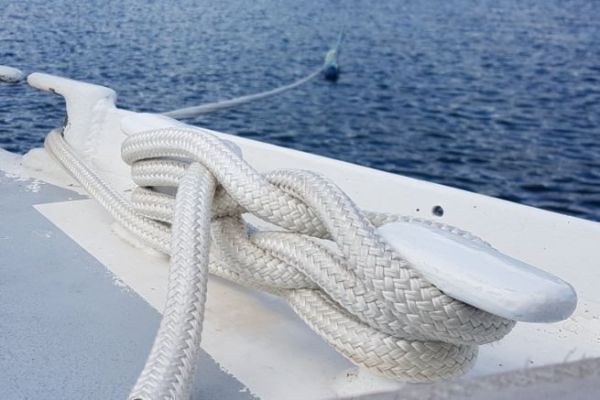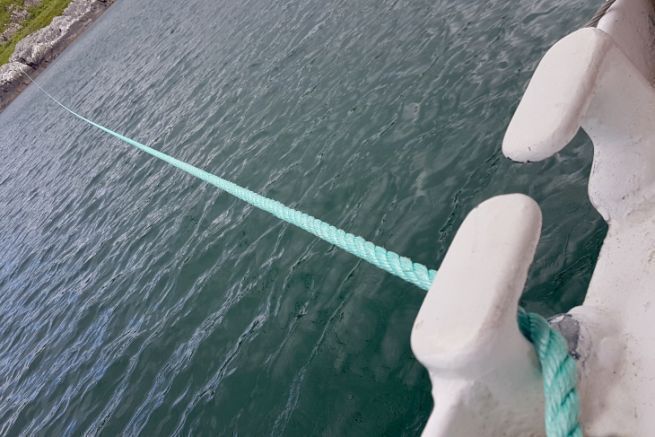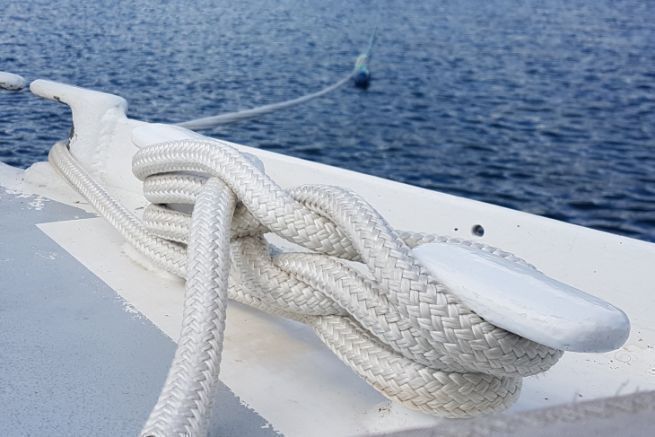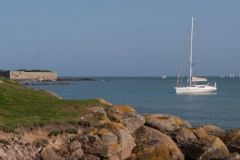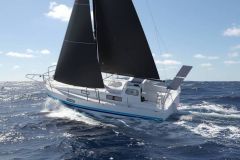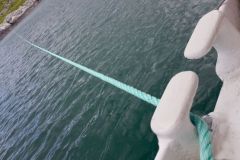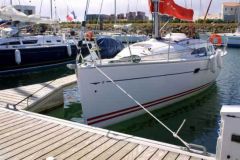The necessary adjustment of the boat mooring
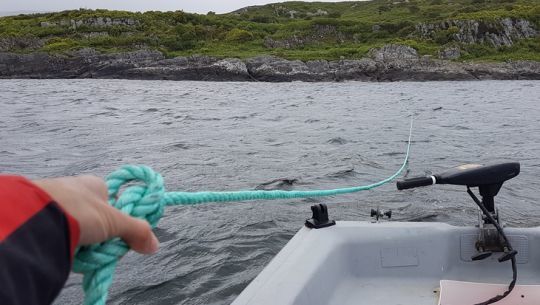
We could simply use a cleat to hit the mooring line we passed ashore. But there is a better way. We want to be able to easily adjust the length of the mooring line, even under high tension, and to be able to cast off the rear mooring point for a front one. Or even get rid of our mooring line completely in an emergency.
How it works
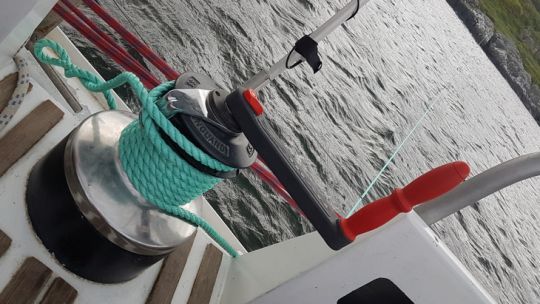
We are fortunate to have a large winch capable of handling our 14mm mooring line. The line goes through a fairlead and then through the winch. Although this is not its primary role, with the right angle, it can take such a line.
The free end was tied to another mooring line (with a sheet knot) and then to a fender.
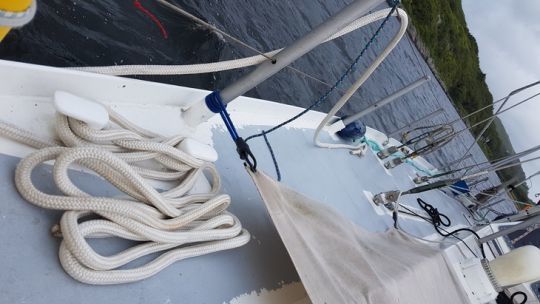
The second mooring line is itself hit to a cleat at the front of the boat, so that if we release the rear mooring point, we are automatically held back at the front. The fender is used to locate the end of the mooring line in case of release.
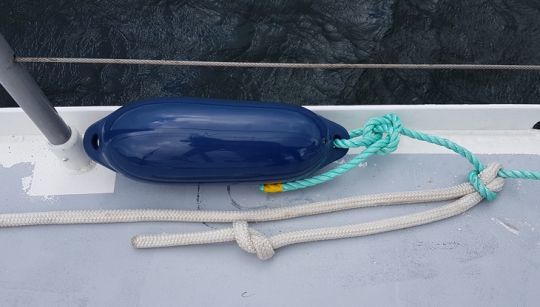
If you don't have a big winch
You can make a cleat knot so that it can be easily removed under tension. To adjust, however, is more difficult. If there isn't too much tension, you can adjust it by hand. If not, a smaller rope should be used temporarily to bring the line in with a winch.
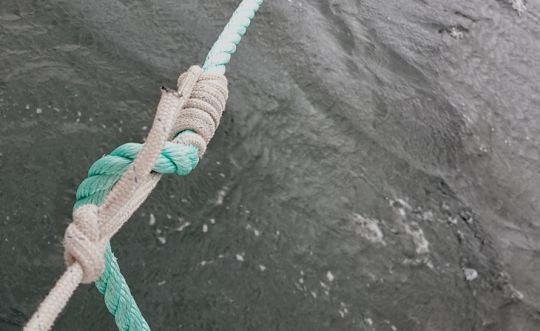
Recovering the mooring line
This is easily done with the dinghy. Start by casting off on the boat side, then recover the mooring line by coiling it or inserting it into the bag as you go. Retrieve the equipment from the shore and bring it back to the boat with the dinghy.
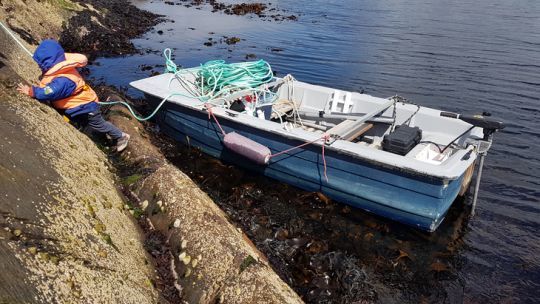
Some additional tips
-
With neighbors at anchor, it is helpful to have fenders or buoys along the mooring line to make it more visible. If there are a lot of people around, it is important to make sure you don't get in the way of others.
-
Since a large mooring line is difficult to handle, some travel boats are equipped with furlers. But these are not always easy to handle with a dinghy. A large bag with the line laid out loose is a good ready-made solution. In this example, we used a multi-part coiled line, which also makes it easier to carry and handle.
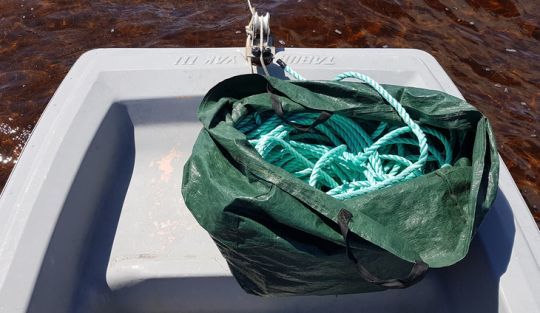
In conclusion
Our mooring allowed us to spend a very good night in this anchorage by eliminating the roll. However, we were able to stay put thanks to the presence of a steady wind on our starboard bow. Without wind, we would have needed at least three anchor points. Unless it is firmly anchored, a boat is naturally and irremediably crossed by the swell.
The ability to adjust our mooring line was very useful. On the one hand to orientate the boat against the swell with precision, on the other hand to adapt the tension on the mooring line when the wind has changed.

 /
/ 